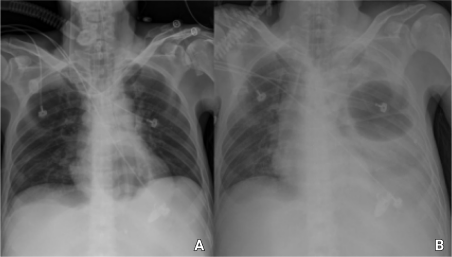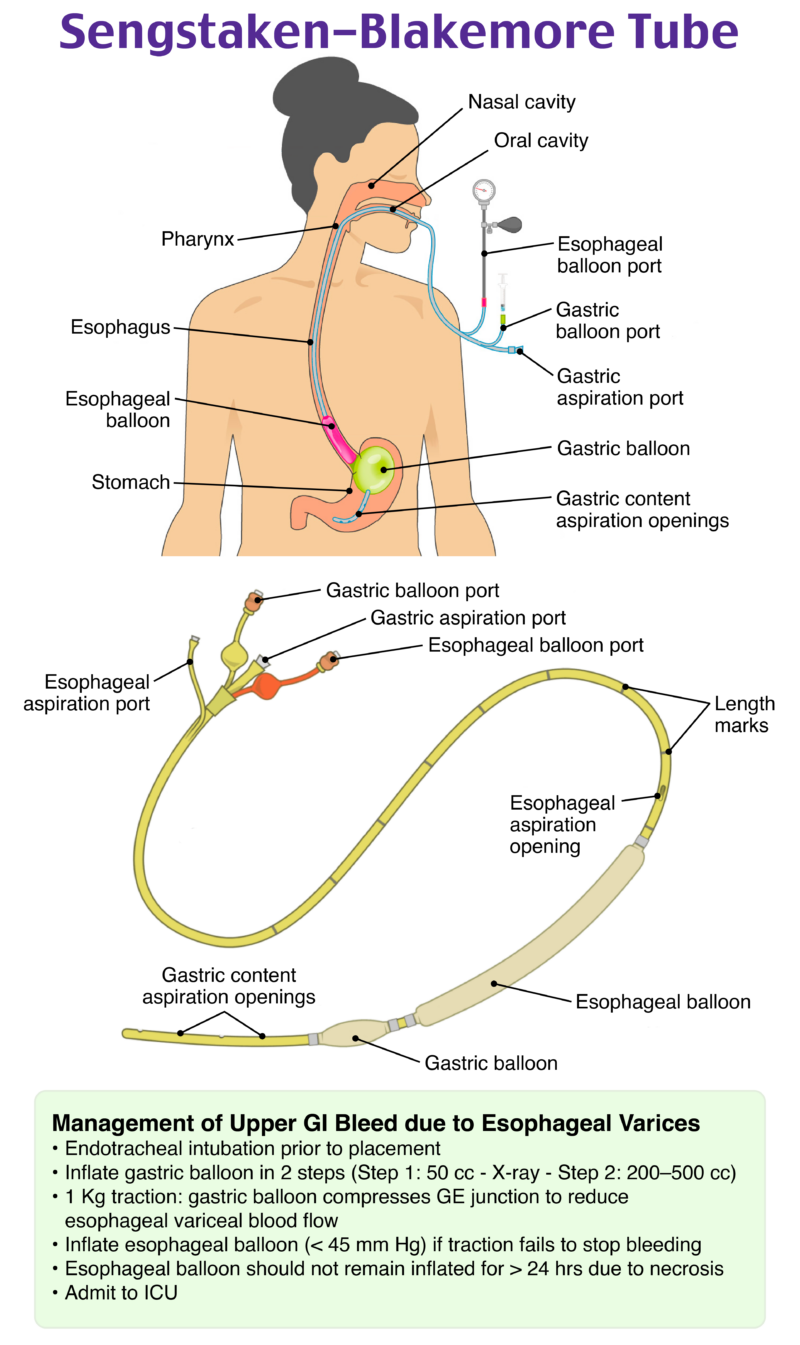Elevate your critical care skills in the ED, ICU, and OR with 250 expert-authored questions, aligned with ABIM, ABA, and ABS guidelines for optimal performance and success.
Aligned with the American Board of Internal Medicine, the American Board of Anesthesiologists, and the American Board of Surgery formats. Authored & peer-reviewed by faculty, clinicians, and program directors.
Each question is written to resemble the format and topics on the exam, meaning you won’t see any negatively phrased questions, no “all of the following except,” no “A and B”…you know what we mean. Most importantly, all questions include selective distractors (incorrect answer choices), which will help you think critically.

A 58-year-old man with a history of chronic obstructive pulmonary disease and cirrhosis with a Model for End-Stage Liver Disease score of 28 presents to the emergency department after several episodes of large-volume hematemesis. He has altered mental status, tachycardia, and hypotension. The team proceeds with intubation, and the initial endoscopic intervention is aborted due to profuse bleeding at the gastric fundus. A Sengstaken-Blakemore tube is placed to tamponade the bleeding. Chest X-ray images taken 4 hours apart are shown above (A and B). What is the most likely explanation for the findings in image B?
A Sengstaken-Blakemore (SB) tube is a two-balloon device that provides tamponade to esophageal and gastric bleeding through direct compression. It is used as a temporary life-saving intervention in cases of massive bleeding unresponsive to initial medical and endoscopic treatment. The SB tube is inserted in the stomach, with auscultation used to verify initial placement before partial gastric balloon inflation with 50 mL of air. A chest X-ray is used to confirm the gastric balloon position in the stomach before full inflation of the balloon with an additional 200 mL of air. The esophageal balloon is then inflated to 30 mm Hg with a manometer connected to the esophageal port. If bleeding persists, the pressure can be increased to a maximum of 45 mm Hg. Balloon inflation should be used transiently (for a minimum of 4 hours and never longer than 24 hours) because of the high rate of complications, including esophageal perforation, mucosal necrosis, and airway obstruction. Image B shows a lucency overlying the left chest consistent with an SB balloon in the chest, which suggests a rupture of the esophagus by a gastric balloon inflated in the esophagus, an overinflated esophageal balloon, or one that was kept in place longer than necessary.
Understanding why an answer choice is incorrect is just as important as knowing why one is correct. That’s why every Rosh Review question includes detailed explanations for the correct and incorrect answer choices. These comprehensive summaries link the most important components of a topic—from risk factors to diagnostics and treatment—giving you the context to build relationships between them.
Custom illustrations and tables help further clarify the core concepts. When information is presented visually, you can focus on meaning, easily reorganize and group similar ideas, and make better use of your memory.

Your personal analytics allow you to see your progress at all times, so you can create an efficient and effective learning strategy and stay on pace with your plan.
After each explanation is a straightforward question with a simple, memorizable answer that reinforces the corresponding topic.
How successful is the Sengstaken-Blakemore tube at controlling severe gastroesophageal bleeding?
Esophageal Varices
These bulleted reviews focus on condensed, high-yield concepts about the main topic, from patient presentation to preferred management.
 To access the Qbank, go to the Create Exam tab to begin making and taking exams made up of questions from the Qbank.
You can find any boost exams under the My Exams → Boost Exam tab.
Once you've completed and submitted a few exams, you can see your statistics under the Performance Analysis tab.
To access the Qbank, go to the Create Exam tab to begin making and taking exams made up of questions from the Qbank.
You can find any boost exams under the My Exams → Boost Exam tab.
Once you've completed and submitted a few exams, you can see your statistics under the Performance Analysis tab.Marina Boushra is an emergency medicine physician and intensivist at the Cleveland Clinic. Her academic interests include the care of pregnant and peripartum patients, toxicologic emergencies, and ED-ICU transitions. She is passionate about medical education and especially the evolution of emergency medicine-trained critical care physicians. Outside the hospital, she enjoys traveling, being overly competitive at games, and binge-watching television with her husband, Michael, and their steadily growing number of allergy-inducing cats.
Fahad Alroumi grew up in Kuwait and went to medical school at the Royal College of Surgeons in Ireland. He completed his residency and fellowship at Lahey Hospital and Medical Center in Burlington, MA. He is board certified in Internal Medicine, Pulmonary Disease, and Critical Care Medicine. Fahad is passionate about medical education and has recently graduated from the Master of Education in the Health Professions program at Johns Hopkins University. He has practiced medicine in academic and community settings in both rural and urban medical facilities. He loves learning about cultures through food and is a Duolingo aficionado!